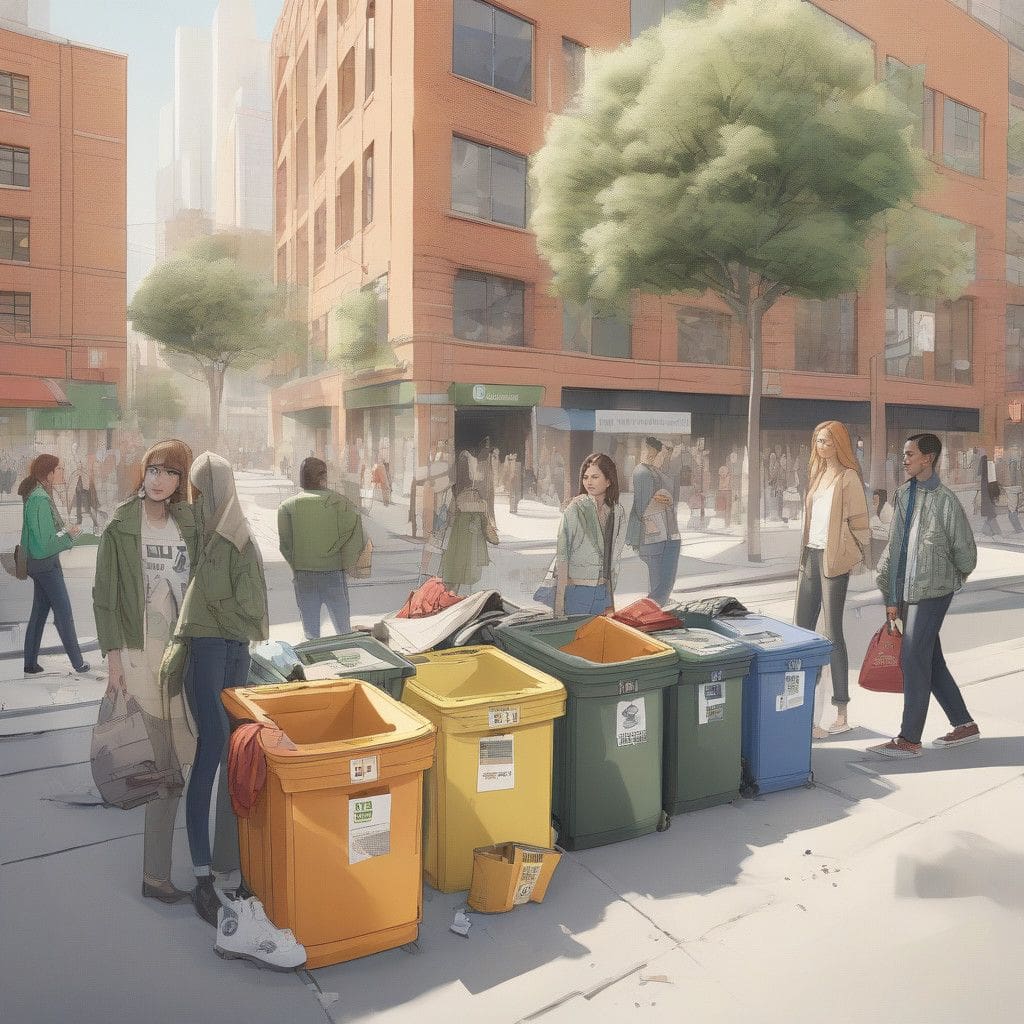The state of California is on the brink of a groundbreaking initiative aimed at addressing the escalating problem of fashion and textile waste. A new bill, titled the Responsible Textile Recovery Act, seeks to shift the responsibility of recycling clothing from consumers to manufacturers. If passed, this legislation will enable Californians to drop off unwanted clothes, including damaged items, at designated collection sites, which may include thrift stores and community charities.
The statistics surrounding textile waste are alarming. Since the 1960s, the amount of textile waste in the United States has surged nearly tenfold, reaching an unprecedented 17 million tonnes in 2018 alone. A staggering 85 percent of clothing ends up in landfills, generating methane gas and leaching harmful chemicals into the environment. While some textiles can be recycled, only 15 percent are currently reused, even though 95 percent of materials like fabrics, buttons, and zippers could be recycled. These figures sparked concerns among lawmakers and environmental advocates, urging immediate action.
Leading the charge is State Senator Josh Newman, a Democrat who introduced the bill. Newman highlighted the extensive consultations with various stakeholders, stating, “We worked really hard to consult with and align all stakeholders in the life cycle of textiles.” The bill received broad support, backed by over 150 endorsements from environmental organizations, waste managers, and retailers, including notable names like Ikea and Everlane.
The Responsible Textile Recovery Act aims to create a statewide system that holds manufacturers accountable for their products. By 2026, companies producing apparel, towels, and upholstery will need to establish non-profit organizations responsible for designing collection systems and mail-back programs. The initiative is expected to be operational by 2028 at the earliest.
Proponents of the bill emphasize its potential to transform the fashion industry into a more sustainable and circular economy. This transition could unveil new production opportunities that benefit the environment and generate over 1,000 green jobs in California. Under the program’s framework, manufacturers will be encouraged to adopt eco-friendly practices throughout their products’ life cycles.
While the legislation has faced some opposition concerning potential cost increases for consumers and smaller brands, Newman estimates that the impact on prices will be minimal – less than 10 cents per garment. Sustainable fashion designer Yotam Solomon expressed his support, stating that the industry has long needed such regulations.
Dr. Joanne Brasch, co-sponsor of the legislation, pointed out the financial burden already placed on taxpayers due to textile waste disposal. In 2021 alone, California discarded approximately 1.2 million tons of textiles, costing taxpayers over $70 million for waste management.
Historically, thrift stores and charities have offered a second-hand market for reusable textiles. However, when contributions are damaged or unusable, they often contribute to landfill waste, creating additional challenges in waste management. This trend is not limited to California alone; countries in the Global South, such as Ghana and Kenya, have become dumping grounds for what is often referred to as “dead white man’s clothes,” exacerbating the waste problem on an international scale.
The bill is part of a broader shift seen in various regions worldwide. France and the Netherlands, for instance, have instituted similar laws, paving the way for increased textile recycling and sustainability measures. France’s legislation initiated in 2007 has successfully increased their diversion rate from textile waste to over 39 percent, a stark contrast to California’s current status. By adopting the Responsible Textile Recovery Act, California aims to join scores of other regions spearheading sustainable initiatives to mitigate textile waste impacts.
The proposed mandate reflects the growing recognition that the fashion industry has a significant role in environmental pollution, contributing roughly 10 percent of global carbon emissions—more than all international flights and shipping combined. The fast fashion model, characterized by low-cost, low-quality garments with short life spans, has been a primary driver of this crisis.
The Responsible Textile Recovery Act has potential implications not only for California but for the entire fashion industry. With the trend towards sustainability gaining momentum, other states may look to California as a model. This act could set a precedent for nationwide changes in how clothing is produced, consumed, and disposed of.
California is taking a bold step to change the status quo surrounding clothing waste. By placing recycling responsibilities in the hands of manufacturers, the state may help to create a more sustainable fashion ecosystem, benefiting consumers and the environment alike.











